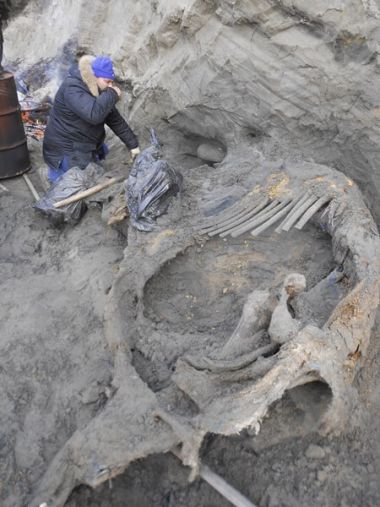Remains of woolly mammoth found in Siberia may change human history

A recently unearthed carcass of a woolly mammoth found frozen under the ground in Siberia can possibly change human history as we know it now.
A team of researchers recently pulled from frozen sediments at a steep bank on the eastern shore of Siberia's remote Yenisei Bayin—located in the far north of Russia—what seemed to be a regular animal carcass, but was surprised to find signs that the woolly mammoth died in the hands of hunters.
The carcass had a rounded hole through the interior jugal, deep incisions along the ribs, dents in the left scapula and a broken mandible—all indications that it was killed by human beings, and did not die of natural causes.
After the researchers dated the remains, they were surprised that the mammoth died some 45,000 years ago--way beyond earlier estimates that human beings only reached the Arctic about 35,000 years ago.
The study suggests that humans already made it to the most frigid parts of the globe 45,000 years ago, and that they were able to adapt to the harsh conditions in the Arctic to be able to survive.
Vladimir Pitulko, a member of the team who reported their findings in Science Magazine last week, pointed out in an interview with BBC that the carcass of the woolly mammoth also revealed that its attackers were "very skilled and organised hunters and tool makers."
The team was particularly intrigued with the puncture mark in a cheek bone, which was believed to have been caused by a sharp, robust and geometric weapon.
"This injury itself is probably the result of a missed blow, targeting the base of the trunk," Pitulko told BBC News.
"This specific hunting method is still practised in Africa by elephant hunters, who target the base of the trunk to cut major arteries and cause mortal bleeding. This blow becomes necessary after the animal has been sufficiently injured, and the SK mammoth displays numerous injuries in the thoracic (chest) area," he added.











